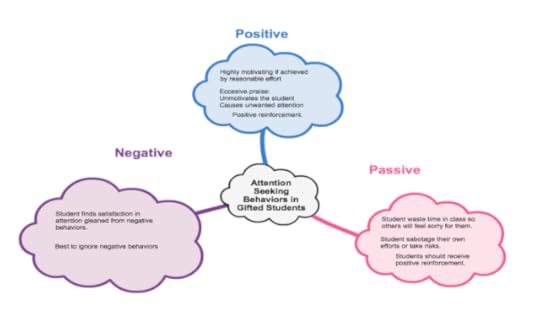Allison Bruning's Blog, page 9
May 3, 2016
Schoenbrunn Village and the #Shawnee

“I am taking my wife’s body back to Schoenbrunn Village.” Hawk Song said to his brother and war chief, Little Owl. “And your wound?”
“If I die on the way there, I die. I must do this. She believed in the white man’s god and I will not dishonor her spirit. Her body will sleep in the white man’s cemetery at her village.”
Little Owl extended his hand to Hawk Song. Hawk Song clasped his brother’s forearm. “Do not be gone for long, the- tha.”
“I promise I will be back in six months. If I do not return by then, come for me. Do not let the white man corrupt me as they did to the grandfathers.”
- Excerpt from Calico (Children of the Shawnee: Book 1)
Schoenbrunn Village and the Shawnee
The world drastically changed around the Shawnee as settlers, dismissing the warnings of not upsetting the Shawnee, began to pour over the Appalachian Mountains into Ohio and Kentucky. It wasn't the first time the Shawnee had encountered invaders on their lands. They had lost their homelands to the Iroquois during the Beaver Wars. Displaced by the Iroquois, the Shawnee had spent an entire generation away from their lands until a movement to reclaim their ancestral homelands prompted the tribe to walk back into Ohio. Although, the Iroquois had long abandoned Ohio, the Shawnee had to barter with other Ohio tribes in order to settle back on the land. It was here the Shawnee met and traded with the French. The only way to trade with the Shawnee was through family relations. Thus, some French traders took Shawnee women as their wives and created families of their own. The Shawnee valued their French counterparts so much they fought alongside them during the French and Indian War. After the war had ended, the British had kicked out the French from the area. Thus British soldiers who forced a French citizen to leave his Shawnee family either sold the Shawnee wives and halfbreed children into slavery or completely abandoned them to defend for themselves without the benefit of being near their tribe.
The Shawnee had experienced the brutality of the British during and after the French and Indian War. Completely dependent upon trade goods, they had no choice but to trade with the British. Despite this, the Shawnee opposed the British settlers desires to move onto their property. They had been promised by the British that no settlers would cross the mountains onto their lands. But, the British never reinforced their promises, which only upset the Shawnee even more. The Shawnee had no choice but to defend their homeland from the encroaching invaders. They sent a strong messages to the invaders through a series of vicious raids on any settlements in Ohio which caught the attention of Lord Dunmore, resulting in Lord Dunmore's War.
 Not all the of invaders were settlers nor were all Ohio tribes enemies of the white people who sought to settle in Ohio. Schoenbrunn Village was founded May 3, 1772. David Zeisberger and five Native American families had been invited by Delaware Chief Netawatwes to establish a mission close to the Tuscarawas River. The first thing David Zeisberger and his followers did was plant crops in order to sustain them through the winter. After the planting was completed, they built David Zeisberger's home then constructed the church. The village became Ohio's first schoolhouse, church and code of laws. The Moravians and Delaware peacefull co-existed under the same belief system, Christianity. Zeisberger's mission was so successful that the village had a population of 400 within a few short years. The village had been formed into a T formation with the church at the center of town. Shops, cabins, roads, gardens, fields for livestock sprawled throughout the site. The Christian faith had come to reside among the Native population. The conversion of the Delaware to the white man's God was an insult upon the Shawnee. They had a deep respect for the Delaware nation because they believed their tribe had been directly descended from the Delaware. Known as the Grandfathers, the Delaware were their elders. In the Shawnee's eyes, the white man had corrupted one of the most sacred people in their world.
Not all the of invaders were settlers nor were all Ohio tribes enemies of the white people who sought to settle in Ohio. Schoenbrunn Village was founded May 3, 1772. David Zeisberger and five Native American families had been invited by Delaware Chief Netawatwes to establish a mission close to the Tuscarawas River. The first thing David Zeisberger and his followers did was plant crops in order to sustain them through the winter. After the planting was completed, they built David Zeisberger's home then constructed the church. The village became Ohio's first schoolhouse, church and code of laws. The Moravians and Delaware peacefull co-existed under the same belief system, Christianity. Zeisberger's mission was so successful that the village had a population of 400 within a few short years. The village had been formed into a T formation with the church at the center of town. Shops, cabins, roads, gardens, fields for livestock sprawled throughout the site. The Christian faith had come to reside among the Native population. The conversion of the Delaware to the white man's God was an insult upon the Shawnee. They had a deep respect for the Delaware nation because they believed their tribe had been directly descended from the Delaware. Known as the Grandfathers, the Delaware were their elders. In the Shawnee's eyes, the white man had corrupted one of the most sacred people in their world.Although, Schoenbrunn Village was successful it wasn't popular with several groups of people, including the Shawnee. The Shawnee saw Schoenbrunn Village as an intrusion upon the natives way of life. Native American groups who sided with the British and settlers who wanted their lands saw Schoenbrunn Village as a hinderance that needed to be dealt with. The peaceful inhabitants of the village were against all forms of violence. The never supported either side of conflict between the Shawnee and the settlers. Although, they tried to remain neutral the village was attacked several times by several different groups. The village lasted five years. In 1777, David Zeisberger and his followers destroyed the meeting house so no one could ever use it and moved closer to Coshocton.
Published on May 03, 2016 10:11
May 2, 2016
Epigenetics: Changing the Way Researchers View #HumanDevelopment

Welcome back to Lightening the Way: Teaching the Gifted Child. It's been awhile since I've been able to post on my blog. I am happy to announce I am back to writing full time, which means this blog will be up and running again. Whoot! Whoot!

Epigenetics: Changing the Way Researchers View Human Development
Epigenetics Nature versus nurture has been a hot topic of debate within the discipline of human development since the 16th century (Nesterak, 2015). The idea that biology and genes dictate how a person develops throughout life is known as nature. Nurture argues a person develops due to the environmental influences placed upon at any given moment and how a person responds to those influences. People can respond in a positive or negative way, both of which have consequences that influence that person’s life. Scientists have often camped their beliefs in either nature or nurture. The practice of strictly adhering to either nature or nurture actually limits the view of human development. Human development continues throughout a person’s lifespan through a balance of nature and nurture traits. Humans are born with a genetic disposition that allows for personality and biological traits to be shared between parents and a child but that doesn’t always mean the child will turn out to be an exact copy of his or her parents. Heritable traits can change within the way they are expressed but these changes do not change a person’s DNA sequence. Another words, a change in the phenotype does not change the genotype. The science behind understanding how our genes change the way they express themselves is known as epigenetics. Epigenetics, a term coined by Conrad H. Waddington in 1942, is the scientific study of how environment influences genetic expression (What Is Epigenetics, 2016). This new science focuses not so much on how the genes express themselves but what they are doing. David Moore (as cited in Nesterak, 2015) explained in an interview with Evans Nesterak that genes express themselves because of the environmental contexts humans find themselves in.Epigenetic changes occur naturally throughout a human’s lifespan. Some of the influencers that cause epigenetic changes include age, lifestyle, environment and disease (What Is Epigenetics, 2016). Researchers have found many types of epigenetic processes including, ubiquitylation, sumolyation, acetylation, methylation, and phosphorylation (Weinhold, 2006). These natural processes are essential for how humans adapt to the world. Yet, if the natural processes occur improperly it will cause the body to experience major health and behavioral problems. Epigenetics has not had the opportunity to study how human genes change due to environmental factors due to ethical reasons. In order to test the biological changes within the human genetic makeup researchers would have to conduct tests with human beings in a tightly controlled environment. It is unethical to imprison humans and conduct tests on them in the name of science. Researchers have conducted experiments using monkeys and rats (Nesterak, 2015). The results of their research have given new insights into epigenetic. While biological research cannot be conducted upon human subjects it is possible to study the effects an environment has upon a person through research studies in social science. Societies change all the time through economics, war, political movements, and natural disasters. Humans can adapt to whatever changes occur in their lives. Collins (2000) found major societal factors, such as poverty, can influence how parents raise their children. Growing up in an impoverished setting affects everyone within the household. Parental behaviors are effected by how long the family remains in poverty (Collins, 2000). David Moore, (as cited in Nesterak, 2015) found children who remained for a long time within impoverished homes exhibited biological consequences decades later in their adulthood. But the adverse effects poverty has upon the body can be hindered if the child becomes an adult living in a middle class setting. Children who grew up in middle class homes then spend their adult lives as middle class their epigenetic makeup would differ from the impoverished child that became middle class.Conclusion Nature versus nurture has been debated among scientists interested in the study of human development for so long that the arguments between the two has become common in our society. A relatively new science, known as epigenetics, challenges scientists to think outside the box and accept that nature and nurture work together to change the way humans develop throughout their lifetime. Humans don’t have to accept their heritable traits as an end all for their lives. Every person is different. Our lives, personalities and outward appearances may mirror one of our ancestors but that doesn’t mean we have to live the life they had nor accept their adversities as our own. Heritable genes will change as we are confronted with age, health issues, lifestyle and environmental factors. How we accept those changes affects the way we develop. We can grown in a positive way if the changes occur naturally and at the right time. We will incur behavioral and health problems if our heritable genes are forced to change inappropriately. Epigenetic research is quite young. While researchers cannot experiment upon human beings due to ethical problems it is quite possible to learn more from studies conducted upon rats and monkeys. There is more that we need to learn in the field of epigenetics.
ReferencesCollins, W. A., Maccoby, E. E., Steinberg, L., Hetherington, E. M., & Bornstein, M. H. (2000). Contemporary research on parenting: The case for nature and nurture. American Psychologist, 55, 218–232.Nesterak, E. (2015, July 10) The End of Nature Versus Nurture. The Psych Report. Retrieved from http://thepsychreport.com/books/the-e..., B. (2006, March) Epigenetics: The Science of Change. Environ Health Perspect. 114(3), A160-A167. Retrieved from http://www.ncbi.nlm.nih.gov/pmc/artic... is Epigenetics? (2016) Epigenetics: Fundamentals. Retrieved from http://www.whatisepigenetics.com/fund...
Published on May 02, 2016 10:48
May 1, 2016
#What'sUpWithAllison: New Adventures in #Marfa, #Texas

I can't believe it's May already. It feels like time is just flying back ever since Daylight Savings Time ended. I've been busy working on my WIP, Lies and Deceit. Lies and Deceit is the second book in the Children of the Shawnee series. The first book of the series, Calico, can be found on Amazon. Here's the book trailer for Calico.
I'm very excited about the release of the second book. It's set to be released late summer/early fall 2016. I'll be publishing it under a new publishing house, Big Bend Productions. More information will be coming soon about my new press.
Other than writing, I have been busy organizing my home. I moved back to Marfa, Texas last weekend. I love being back in my husband's hometown. It's an artist community. I'll not only be writing my books but will also be operating our new publishing house, Big Bend Productions. My husband and I plan to launch the new business at the same time as we release Lies and Deceit. I'll be pursuing my writing career full time and pursuing my doctoral studies as my husband and his brother run the day to day operations of the publishing house.
Published on May 01, 2016 10:24
April 28, 2016
What's Up With #AllisonBruning? @NaNoWriMo #author #armchairBEA

Hi everyone! It's been awhile since I have posted. I haven't blogged since October 2015. So much has happened since the last time I was able to blog. My long silence is over. I'm back to blogging again!
So what's up with Allison Bruning?
Did she fall off the face of the earth? No, silly. I moved back to Texas, have been working on the sequel to Calico and had some health problems that have been resolved.
This month, I have been participating in CampNaNoWriMo.

Camp NaNoWriMo is offered twice a year. I've decided to write Lies and Deceit (Children of the Shawnee: Book 2) during the first session of Camp NaNoWriMo. My goal is to reach the first 50,000 words by the last day of April. I'm so close. I have 47,348 words today. I expect I'll win Camp NaNoWriMo by tomorrow. I'm so excited. The story is coming along wonderfully. I want to publish it this summer under my new publishing house.

I'm very excited about the next thing. I've been participating in Armchair BEA for a couple of years. This year, I won't only be an author and participant. I've been asked to help organize the event. I'm part of the prize committee. I can't wait for Armchair BEA to begin Armchair BEA occurs during the month of May. It's a great event for authors and book bloggers to get together. I'll be donating some of my books as prizes this year.
I've meet several great book bloggers and reviewers during Armchair BEA. I'll be making some changes to my blog during the event as we have uniformed blogging topics that each blogger that participates has to write. The topics are always fun to write about.
My blog schedule will roughly remain the same but there may be a few changes. I'll keep my readers posted.
Sunday - Sunday Post
Monday - Lighting the Way
Tuesday - Historical and Cultural Blog
Wednesday - Express Yourself
Thursday - Historical and Cultural Blog
Friday - OPEN
Saturday - OPEN
Published on April 28, 2016 06:58
October 14, 2015
#ExpressYourself #Chocolate, #TeddyBears and Zombies

It's Wednesday. Hump Day? Well yes but no....It's time for the Express Yourself Weekly Blog Hop. I'll be playing catch up today since I've missed the first two weeks of October. I can't believe it's the middle of October already. Where has the time gone?

Sept. 28 - Oct. 2:
What is my favorite kind of cookie &/or cake?
I love anything with chocolate except for German Chocolate Cake. I can't stand anything with coconut in it. Coconut tastes like cardboard. No taste what's so ever. I hate that. I don't like mild chocolate, either. The darker the chocolate the better.
Oct 12 - Oct. 16:

Zombies are busting through your hideout, you only have one exit, with little to spare, what 3 items do you grab?
My computer, cellphone and Honey Joe. Honey Joe has been my teddy bear since I was nine years old. He protects me from the monsters so I might need him to help me escape. Besides, I wouldn't dream of leaving my childhood bear behind the lines with zombies. He's been a great support for me during the good and bad times of my life. The photo on the right shows him and his wife, Honey Jane, reading one of my books. They really enjoyed it.
Published on October 14, 2015 04:48
Where's Allison? #gifted #Indianapolis #nonprofit
 Wow.
Wow.I can't believe it's been a few months since I've last blogged. I'm so sorry to my fans for the hiatus. So much has changed since I last blogged to my fans. I've been quite busy. But I'm back now.
So what have I been up to, lately?
I'm so glad you asked.
Aside from working on my studies for my PhD in Education work, I have been busy with a new educational venture. Seven weeks ago, I started a new nonprofit organization called Mountain Springs Academy. It's mission is to transform the educational experience in order to empower gifted students. We achieve this by working with parents, students and educators. You can learn more by visiting our website at academicwarriors.com. The students also have a blog at http://mountainspringsacademy.blogspot.com/. The blog is maintained by the students. They can also be found on Facebook at https://www.facebook.com/MSpringsAcademy We are working on joining other social media sites as well.
Next month is NaNoWriMo. I'm very excited about this because I have several writing projects I need to work on. I'm currently working on Lies and Deceit, book 2 of the Children of the Shawnee series. I have other novels that need to be written as well as some children's books and shorts.
Well see you next time, my fans.
Published on October 14, 2015 04:08
August 16, 2015
#WUWA: PhD and Writing

I've survived another quarter of graduate school!
All has been quite on my blog for a couple of weeks. Not a sound. I hope my readers haven't give up on me. This past quarter of PhD work about killed me. I don't know if you can die from studying so much but I'm pretty certain I was almost there. LOL. The last few months have been chaotic for me with school, writing, etc. I'm so glad I'm on a two week break. I needed it.
So if you haven't heard or don't already know, I've been working on my PhD in Education at Walden University. I just finished my first year. I loved it! I can't believe I'll be attending my second residency this quarter. Where has the time gone by?
Just because I'm in graduate school doesn't mean that I'm not writing. In fact, I'm working on the sequel to Calico (Children of the Shawnee: 1). I'm excited about this book. The sequel is titled Lies and Deceit. It's not a book you want to read if you haven't read Calico. The story picks up a few months after the ending of the book.
Published on August 16, 2015 11:45
July 29, 2015
#ExpressYourself: Writing, Music and More

It's hump day! Happy Wednesday! I've been busy these past few weeks working on my manuscript for Camp NaNoWriMo. My goal this month was to write 100,000 words. I'm up to 80,000. Lord, help me. I have 20,000 words to write in two days. AAAAAHHHH.
So since I've been busy writing I've missed a few days of posting. I have two Express Yourself entries for today. Gotta make up for the one I missed last week. LOL.
July 20 - 24
Name 2 favorite places/spots you like to hang out at.
Oh this one is easy! I like to go camping with my friends and family. Any park will do. The more secluded the better. I love to just sit in the forest and let my imagination fly.
My second favorite place is the Indy Reads Bookstore. This independent bookstore in Indianapolis is the hangout for all my NaNoWriMo buddies in Indianapolis. We have monthly meetings where we encourage each other to keep on writing. Here's a pic of us at our last gathering at Indy Reads.

July 27 - 31
Share a few songs from you WIP playlist.
Hmm, I normally don't write with music but there are some moments in my writing time that I will chose to listen to a song. It usually happens when I'm having a hard time with a certain scene.
My current manuscript is a bit more paranormal than the first book of the Children of the Shawnee series. I wasn't planning on it but all of a sudden I ended up having a time traveler in the book. An adult version of Black Buffalo travels from 2015 to 1774 where he is only a few years old. No my math isn't off. He's an immortal shaman. I decided he was going to be singer after listening to this song. The lead singer with the curly hair looks like my character.
I had problems writing a scene the other day between Calico and Chief Big Deer. It was a pretty dramatic scene where he delivers words of wisdom to her. I just couldn't piece this scene together. So I went to YouTube and looked for some Shawnee music. I found this wonderfully talented men, listened to their music and wrote the scene. It turned out to be very dramatic.
Published on July 29, 2015 15:16
July 27, 2015
LTW: Motivating the #Elementary #Gifted Student

Motivating the Elementary Gifted Student The gifted population in America often struggles academically, socially, and mentally while in the public school system. These struggles are often seen in gifted students as early as the second grade. One of the reasons gifted students struggle is motivation. Shunk, Meece and Pintrick (2014) define motivation as “the process whereby goal directed activities are instigated and sustained” (pg.5). Long (2013, September) found gifted students need to be intellectually stimulated or they will become bored in class (pg. 1). Most educators struggle to keep their gifted students engaged within their classroom. Theroux (2014) found not all motivational theories will work well with every gifted student (pg. 1). Educators need to implement different motivational strategies frequently (Theroux, 2014, pg.1). Classical Conditioning Classical conditioning is the process in which a stimulus is presented to the student in order to elicit a response (Shunk, Meece, and Pintrick, 2014, pg. 22). A response will not occur if the learner does not see a link between their response and the stimulus that was given. Gifted students will not respond if they have “checked out” of the learning environment. A gifted student will “check out” of a learning environment when their minds are somewhere else (Long, 2013, September). This usually occurs when the student is unmotivated. Unmotivated gifted students will operate within classical conditioning whenever they are seeking attention. Theroux (2014) found gifted students who are bored would frequently seek attention through positive, negative or passive attention seeking behaviors depending upon their preferred attention seeking style (pg. 1. See figure 1).

Figure 1Operant Conditioning Operant Conditioning is a motivational behavior theory that is like classical conditioning. In both Operant and Classical Conditioning a stimulus is introduced and a response is gleaned from the reaction of the student. Schunk, Meece and Pintrich (2014) found motivated behavior can be increased or decreased depending upon the consequences of the student’s reaction (pg. 25). Unlike Classical Conditioning, Operant Conditioning stipulates that a student’s reaction to a stimulus can be changed through reinforcements or punishments (Shunk, Meece and Pintrich, 2014, pg. 24). Reinforcement is given to increase the likelihood that the behavior exhibit will appear more frequently (Shunk, Meece and Pintrich, 2014, pg. 24). Punishments are used to decrease the likelihood of the behavior’s occurrence. Educators who work with the gifted population can use Operant Conditioning to encourage proper behavioral management. A student who turns in all their homework on time may receive a sticker or stamp on their paper would be an example of positive reinforcement. Theroux (2014) cautions educators to sparingly use rewards and punishments as a behavior modifier when working with the gifted population (pg. 1). The goal of the educator should be to develop intrinsic motivation within their gifted students. Theroux (2014) argued rewards are only effective in gifted students when they are unmotivated or engaged in an activity that is lower than their abilities (pg. 1). Rewards should never be increased for increased expectations (Theroux, 2014, pg. 1). Negative reinforcements occur when a reward is removed. A reward is removed once the desired behavior is effective (Theroux, 2014, pg. 1). Bad behavior may be countered by punishment by removing either a positive or negative reinforcer (Schunk, Meece and Pintrich, 2014, pg. 24). For example, a student talks excessively in class. The teacher decides to reward all her students with a sticker except for the student who has been talking. This would be a punishment because the educator has removed a positive reinforcement from that student. See figure 1 for more examples.
ReferencesLong, C. (2013, September). Are We Failing Gifted Students? neaToday. Retrieved from http://neatoday.org/2013/09/18/are-we...
Schunk, D. H., Pintrich, P. R., & Meece, J. L. (2014). Motivation in education: Theory, research, and applications (4th ed.). Columbus, OH: Pearson/Merrill Prentice Hall.
Theroux, P. (2014). Intrinsic Motivation. Davidson Institute for Talent Development. Retrieved from http://www.davidsongifted.org/db/Arti...
Published on July 27, 2015 14:20
July 26, 2015
#WUWA: Surviving Camp NaNoWriMo

This upcoming week is the last week of Camp NaNoWriMo. It's been a great writing month for me. I've had some enlightening moments with my plot and characters. Even though, I had planned my story out the characters have decided that there needed to be a few changes. I'm liking it so far. I think by the end of this week I should hit my goal of 100,000 words. I really don't think Lies and Deceit is going to end at 100,000 words. It's looking like it will be another epic probably the size of Elsa. Elsa turned out to be around 200,000 words. We'll have to see what happens.
Published on July 26, 2015 11:37



